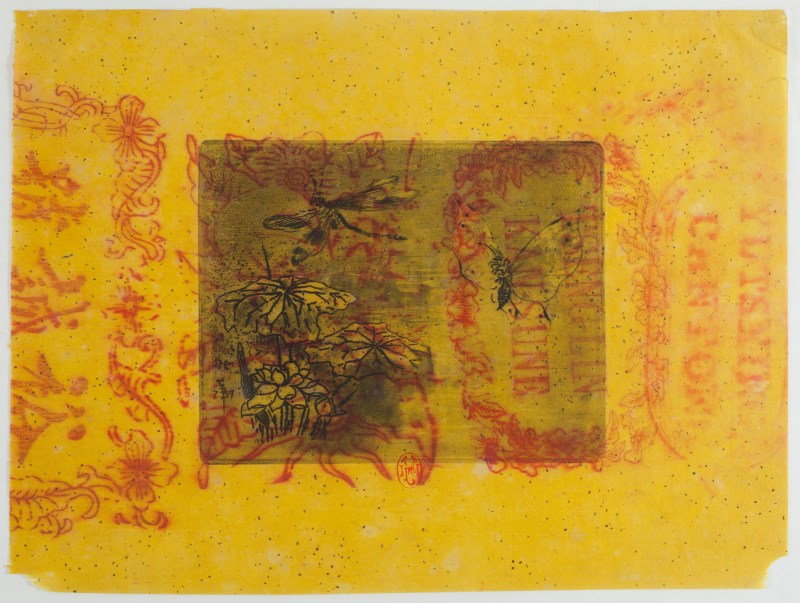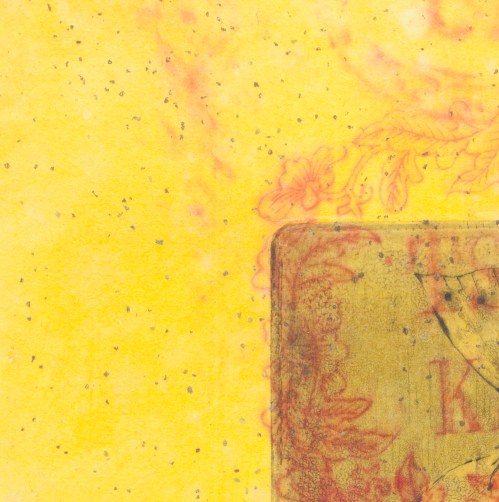Félix BUHOT: Ex-libris : papillon et libellule - 1877
SOLD
Etching and aquatint, 110 x 138 mm. Bourcard/Goodfriend 20, 2nd state (of 3).
Impression of the 2nd state (of 3), before cancellation of the plate. Superb and exceptional impression printed in black on yellow canary-yellow tinted Chinese wrapping paper from the firm of Yuishing of Canton, covered with ideograms and floral ornaments printed in red and a semiset of golden sequins.
Two very small losses in the lower corners, otherwise in perfect condition and freshness. Full margins (sheet: 200 x 265 mm).
Provenance: Eugène Daurand Forgues (1857-1933), his collection mark printed in red at the foot (Lugt 743a).
Phillip Dennis Cate recalls the importance of the choice of paper in Buhot's artistic practice: "When it came to selecting paper, he was, in fact, a perfectionist: "For my artist's proofs I always use, as much as possible, antique paper, searching for a variety of pulps and nuances. But what I always look for above all is the intimate affinity of the paper, its grain, rough or soft, its tone, and its character with the character of the plate to be printed." (Octave Uzanne, "Un Illustrateur aquafortiste, Félix Buhot," Le Livre, VIII (1888), p. 18.) Indeed, an etching was not complete until combined with the proper paper and ink, and, as frequently occurred, the essence of an etching could be entirely altered by changing the inks and paper. It is in the Japonisme series that Buhot's interest in paper, texture, and inks and the aesthetics of the Japanese surimono first meet."
The wrapping paper used here by Buhot represents the quintessence of this aesthetic research. A complete series of Japonisme printed on this paper is in the New York Public Library (Samuel Putman Avery Collection). (See in particular the impression of the Ex-libris). "This last paper appears to be the wrapping paper of a Chinese firm, Yuishing, of Canton. The firm's name is rendered on the paper in both English and Chinese characters, creating another decorative quality surely attractive to Buhot." (Phillip Dennis Cate, 'Felix Buhot & Japonism', in The Print Collector's Newsletter, vol. 6, no. 3, 1975, p. 66).




